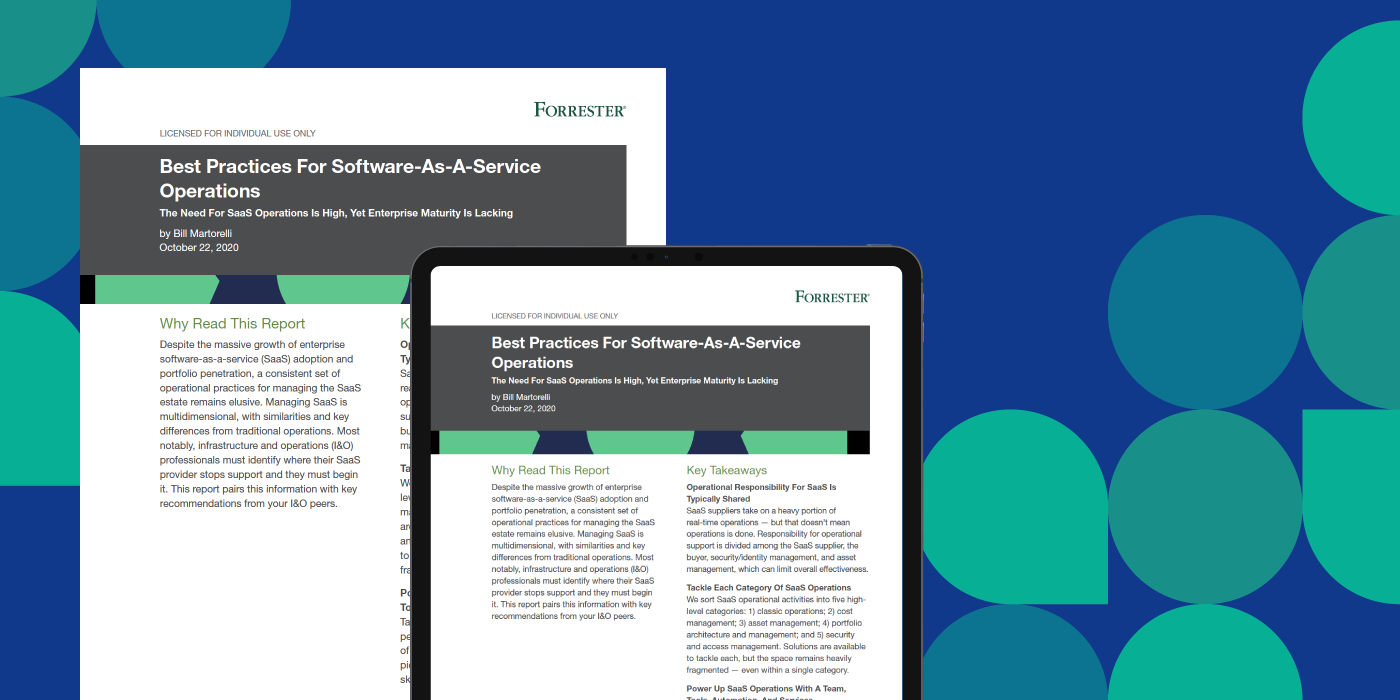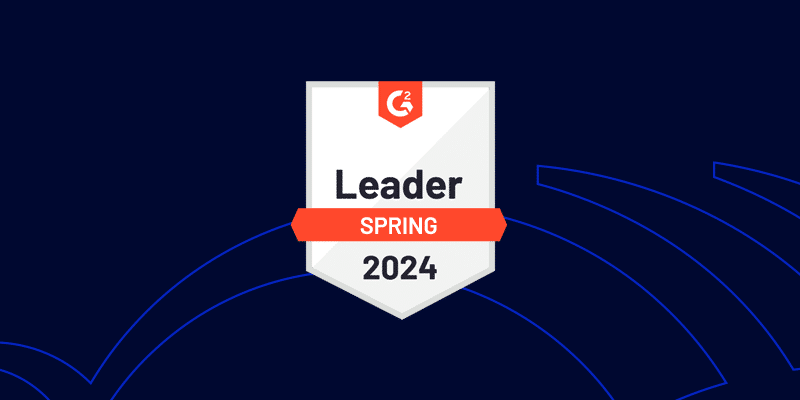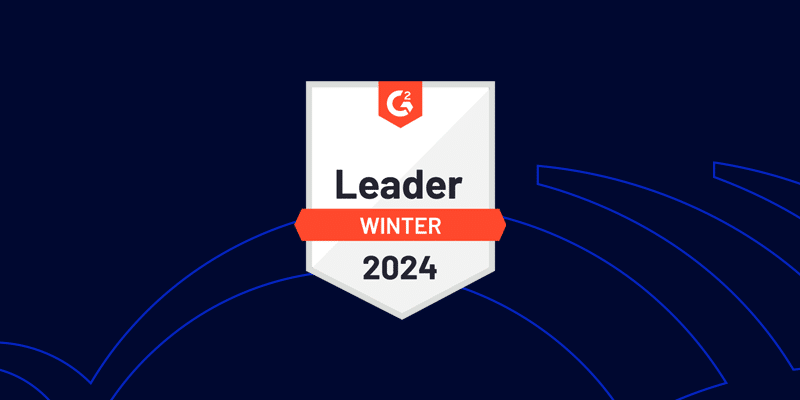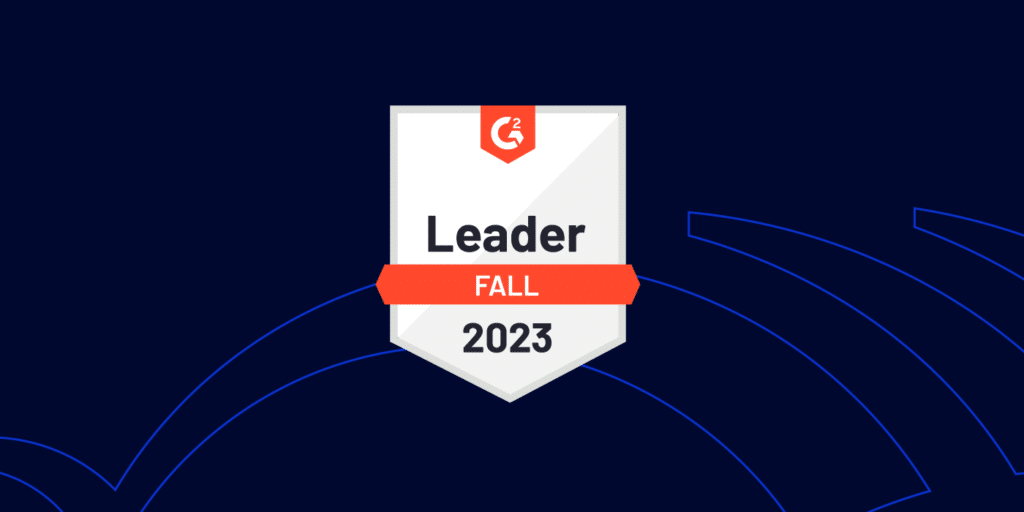Forrester Research Publishes Best Practices Report on SaaS Operations
November 3, 2020
4 minute read

Last week Forrester Research published its market research report titled “Best Practices For Software-As-A-Service Operations.” As the pioneer of the SaaSOps category, we at BetterCloud could not be more thrilled about this.
In this report, Forrester interviewed IT leaders from some of the world’s largest companies to understand the current best practices for mastering SaaS operations. As a result, it does a great job describing the current IT landscape and the key challenges organizations face around multi-SaaS environments — something that every digital workplace can now relate to.
We encourage you to read the full report here, but let’s explore a few of the takeaways from the report.
SaaS Operations Is More Crucial Than Ever
In the report, author Bill Martorelli writes, “Moving from on-premises software to SaaS has been a lengthy journey for large existing enterprises, while SaaS has been a starting point for new and emerging companies. For both types of buyers, SaaS operations provides both opportunities and challenges.
“As support responsibilities for SaaS solutions are shared between the customer and the SaaS vendor, how a vendor handles each operational function differs for each supplier/application. This creates inconsistencies in operations and a great burden for IT teams in supporting the SaaS portfolio as a whole.“
But according to one SaaS administrator, “Supporting Salesforce versus helping a user with a detailed Slack problem are two very different things. I need people with skills across all of them. I’m not getting a unified solution from anyone.”
Power Up SaaS Operations With a Team, Tools, Automation, and Services
In conversations with IT leaders, Forrester found and stated in this report, “Taming SaaS sprawl can be overwhelming. Your peers recommend that you form a cloud center of excellence to tackle SaaS operations, carefully pick tools to tackle each category, and deal with skill shortages by using automation and services.”
The report recommends that IT teams must “strive for highly automated and iterative SaaS operations: With the increasing complexity represented by the growing SaaS estate, SaaS operations must be part of this shift. Only AI and automation can help deal with the scale of new demands and the increasing threat landscape. I&O pros must borrow from what they’ve learned from DevOps.”
The biggest issue for IT managers? It’s SaaS usage, and it’s not even close.
The report states: “SaaS usage can be invisible to IT managers. Much of SaaS consumption is driven by business decision-makers rather than technical IT decision-makers and therefore takes place outside the view of IT operations.
“SaaS sprawl and variable usage mandates cost management and optimization. With hundreds of SaaS applications, all with different consumption models, companies are struggling to understand the associated cost and how best to manage and optimize their SaaS environments.”
This is the sole reason why BetterCloud announced its new Discover product at its annual SaaSOps customer conference a few weeks ago.
One of the most compelling arguments to instill a SaaS Operations practice in every organization is because SaaS governance in multi-SaaS environments is a huge gap and challenge. The report states, “Responsibility for SaaS governance is fragmented in large enterprises. Governance responsibility is complex when considered across a full SaaS portfolio.
“Customers may rely on super admins or super users to take on operational responsibilities. This creates gaps in governance where these areas intersect and communication issues among the various parties.”
Tackle the Principal Elements of SaaS Operations
As you can probably guess, it’s really easy to create an unwieldy SaaS operations strategy. So that begs one important question: How do you get started?
Forrester ran a series of surveys to understand the current best practices for SaaS operations. Based on their conversations with IT leaders at some of the world’s largest companies, it identified these principle elements of effective SaaSOps.
You can download the full report to read about each one in depth, but we’ll break them down quickly below:
- Asset management: “Asset management includes discovery and SAM. With hundreds of SaaS solutions in place, some official and others unknown, asset management is the first step of SaaS operations.”
- Cost management: “License and spend management are examples of cost management. Just as with public cloud, a major focus of SaaS governance is on cost control. Companies want to know what they’re spending and details of their current licenses. With growing usage of SaaS throughout the enterprise, licenses are neither overprovisioned nor underprovisioned. Identifying unused licenses for repurposing is a big opportunity in this environment.”
- Classic operations: “Enterprises need an understanding of a consolidated workflow management solution across multiple APIs to help with the day-to-day administrative tasks associated with SaaS applications.”
- Security and access management: “Examples include access control, security, and user lifecycle management.”
We don’t need to tell you that’s a long list of items for IT to worry about. As you can tell, BetterCloud is the only SaaSOps vendor that provides the most comprehensive solution across the principal activities of SaaS Operations as identified by Forrester.
Everyone at BetterCloud has been outspoken about the need for a centralized SaaSOps strategy, to say the least. And, in our opinion, this is the second time that Forrester has confirmed that we’re onto something.






